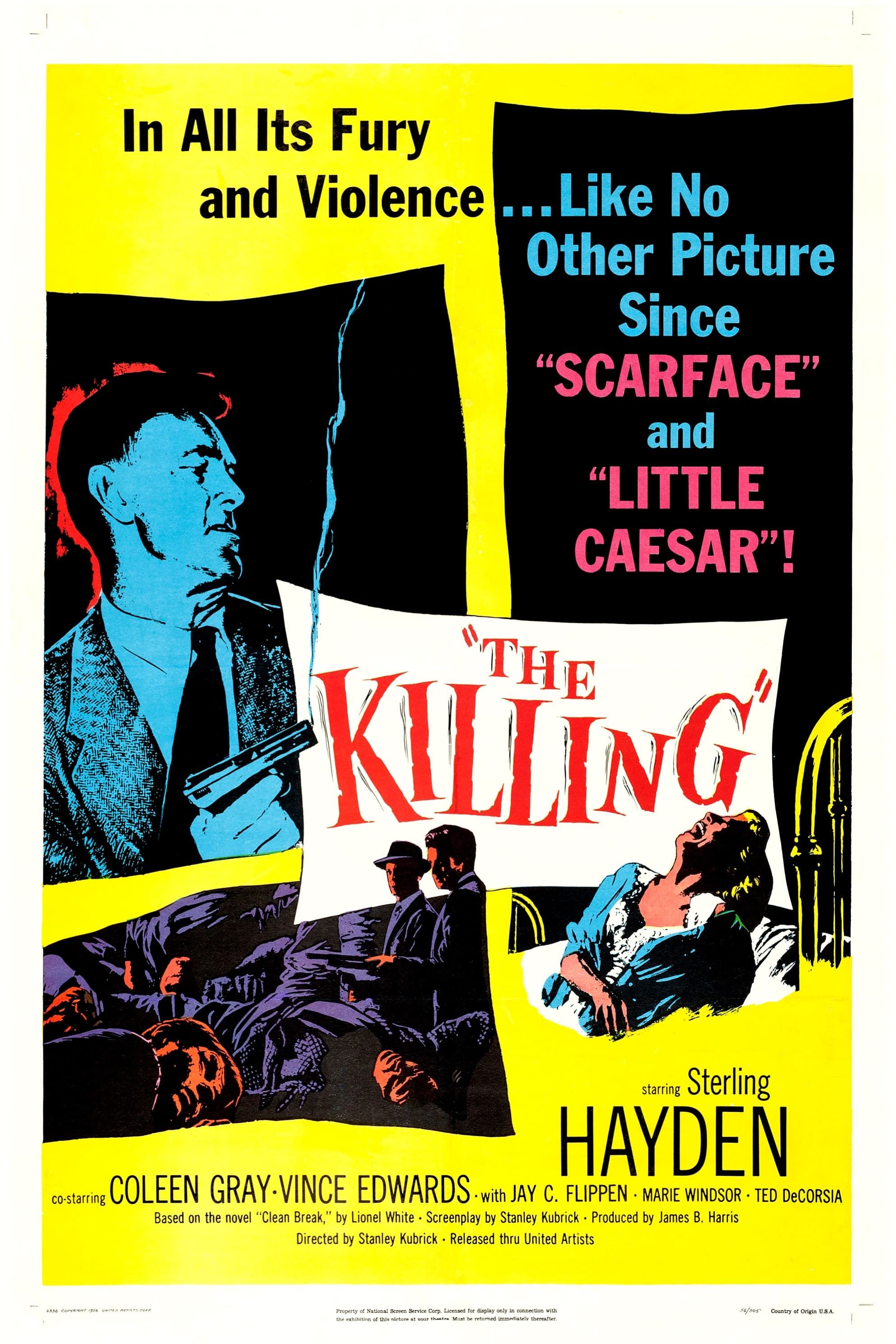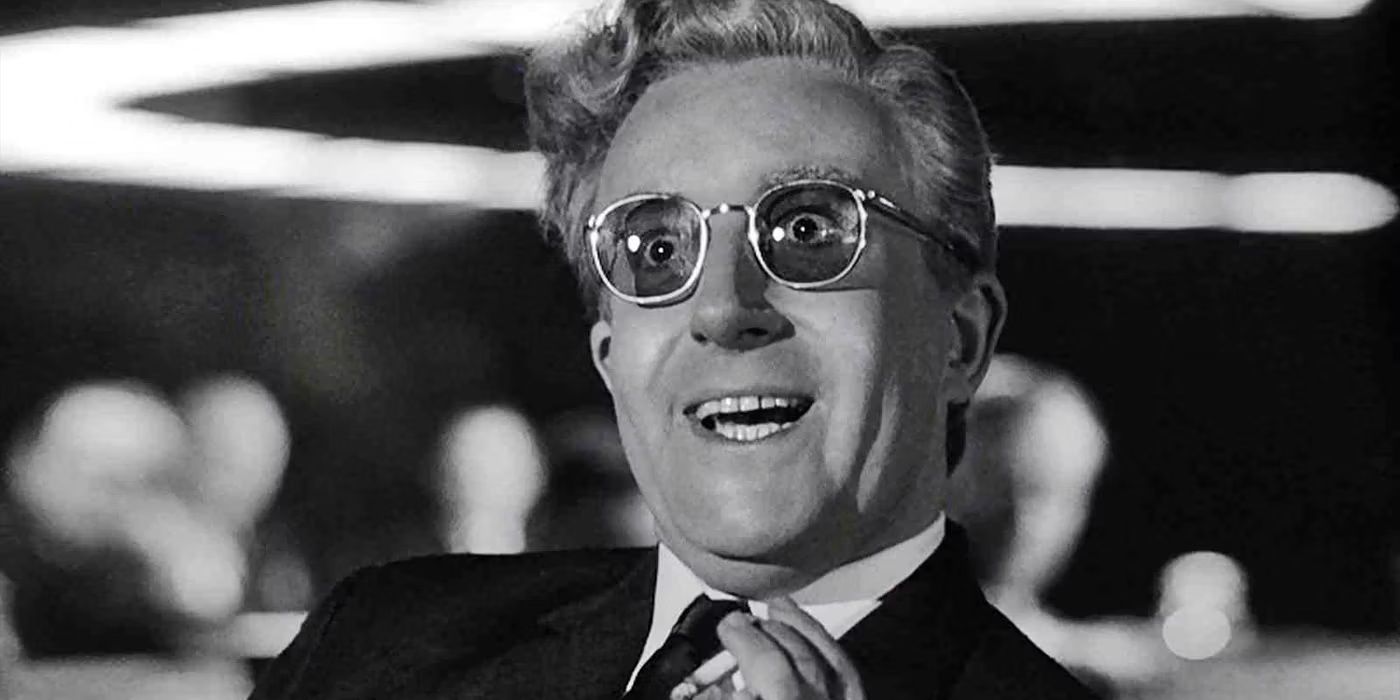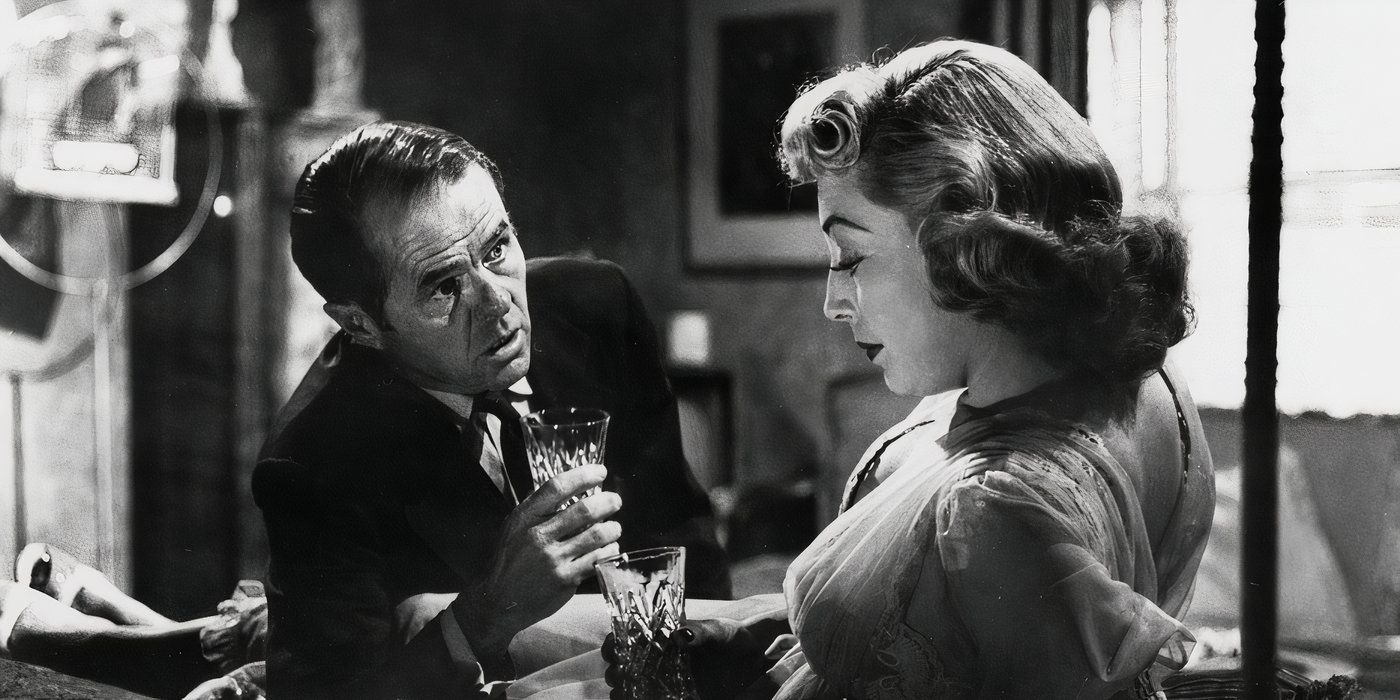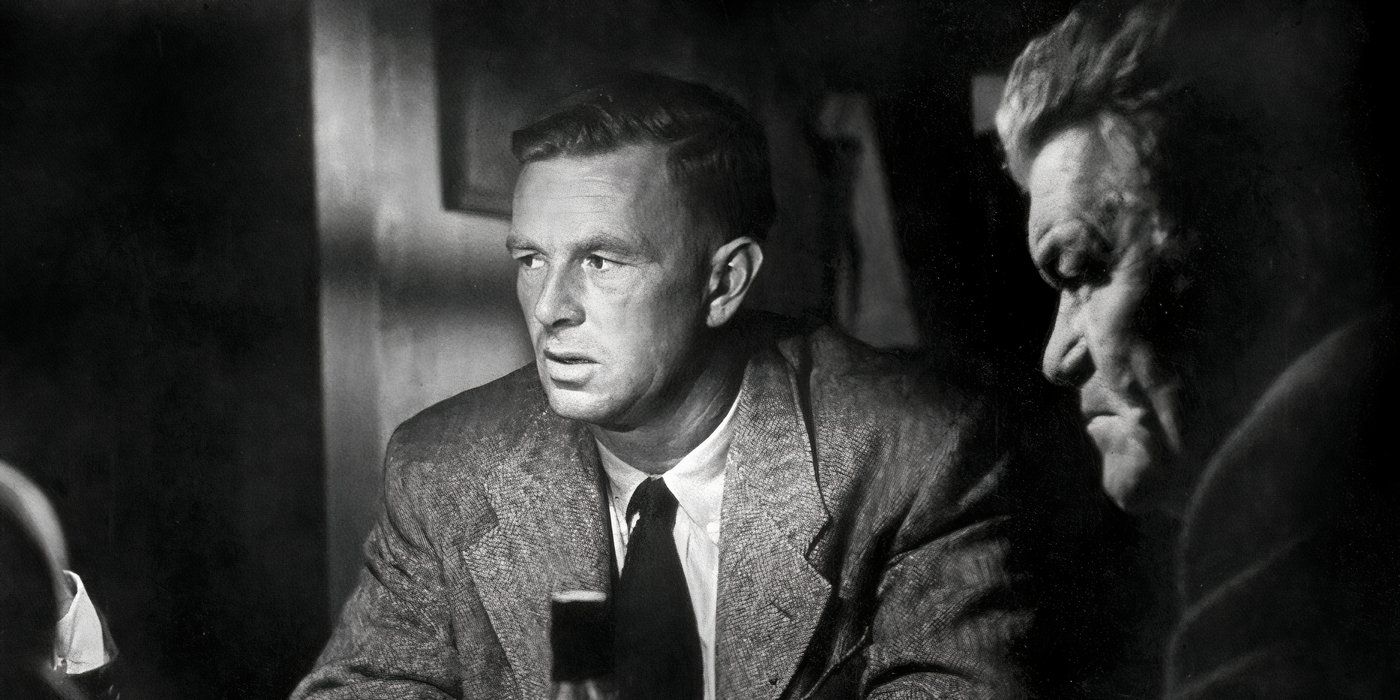The Big Picture
- The Killing's nonlinear structure was groundbreaking for heist films, showcasing the anatomy of a robbery.
- Studio demands to revise the structure were resisted by Stanley Kubrick, maintaining the film's integrity.
- The Killing's subtle influence on the heist genre is evident in films like Reservoir Dogs and Ocean's Eleven.
Stanley Kubrick possesses a rare filmography that features someone's favorite. Among his list of feature films with a standard budget, you could argue for any being your favorite, and no one would bat an eye. Who could go wrong with advocating for Dr. Strangelove, 2001: A Space Odyssey, A Clockwork Orange, or The Shining? Kubrick has been discussed and analyzed ad nauseam in film criticism and everyday conversation, yet his limited work output never gets stale. He is the most glowing example of the power of a film director. That being said, for all the praise that each of Kubrick's canonical films received, The Killing, the director's lone heist thriller, is still overlooked by the masses. Considering that the film, to this day, has influenced the heist genre to its core, it deserves its proper recognition.

The Killing (1956)
Crook Johnny Clay assembles a five-man team to plan and execute a daring racetrack robbery.
- Release Date
- June 6, 1956
- Director
- Stanley Kubrick
- Cast
- Sterling Hayden , Coleen Gray , Vince Edwards , Jay C. Flippen , Ted de Corsia , Marie Windsor , Elisha Cook Jr. , Joe Sawyer
- Runtime
- 84 Minutes
Stanley Kubrick's 'The Killing' Was Groundbreaking for Its Nonlinear Structure
From satire to science fiction, and from horror to war, Kubrick's imprint on a variety of genres may have been overlooked at the time, but time has proven that his vision is everlasting. The operatic depiction of a spacecraft gliding through space in 2001 is synonymous with sci-fi on the big screen, as is the haunting gaze of Jack Nicholson in The Shining to the horror genre. Even in his primal years as a filmmaker, Kubrick molded the modern noir/heist film in 1956 with The Killing, which follows a career criminal, Johnny Clay (Sterling Hayden), who assembles a team of professionals to execute a daring heist at a racetrack. Plans go awry when one of the crew members, George (Elisha Cook Jr.), tells his wife, Sherry (Marie Windsor), about the scheme, so she hatches a plan to steal their money from the heist.
The main synopsis of The Killing is minimalist — almost too thin for a feature film. The thieves aren't the only ones devising tricks, as Kubrick tells the story in a nonlinear structure. We see how the heist unfolds from the perspective of each party involved in the racetrack score. Kubrick jumps back and forth between scenes taking place the day of the heist just hours apart. We also see a mix of vignettes of the individual heist players in their domestic life and the group convening for preparation. While the background and stakes are straightforward, the fragmented structure of The Killing adds intrigue to the dramatic tension in the story. The film creates a dynamic viewing experience, as the narrative is coherent enough to follow, but not too telegraphed to feel like you're outsmarting the direction. Early in the film, the narrator alludes to the heist's execution resembling a jigsaw puzzle, with a lone piece having only a limited but crucial impact on the bigger picture. With a brief runtime of 84 minutes, Kubrick focuses on the procedural aspect of crime and shows how losing focus can derail everything.

'Dr. Strangelove' Was Originally a Grim Thriller, Until Kubrick Did the Research
The Stanley Kubrick's war satire was originally written as a serious drama.Kubrick's use of nonlinear storytelling operates in a similar realm as Rashomon, the classic Akira Kurosawa film about an attack on a samurai and bride recounted from multiple perspectives. Despite it being a Kubrick film, a director notorious for his fastidious vision, reality becomes skewed from interpretation to interpretation. Through his direction, Kubrick operates as an unreliable narrator, which, in turn, infuses the heist with the mystery and haze of a gritty noir. Distrust and paranoia linger throughout the story, which certainly complements the genre's omnipresent angst. Greed and betrayal cause the heist to meet a fatal demise. Most of the heist players are killed, and Johnny presumably faces arrest in the film's stirring final shot. By structuring the story from the perspective of various criminals, the film emphasizes the precarious nature of elaborate criminal scheming. The ambition and weight of the heist cause the plan to collapse in real-time, and by taking us through each misstep, Kubrick effectively characterizes the anatomy of a robbery with unprecedented amounts of detail.
The Studio Demanded Changes to 'The Killing's Structure
The Killing's defining artistic component, the nonlinear structure, was nearly compromised by studio demands. When Stanley Kubrick submitted the initial cut of the film, the studio, United Artists, was outraged. They found the nonlinear structure puzzling and forced the director to revise the film with a clear A-to-B structure. A lackluster early screening featuring numerous viewer walkouts aggravated their concerns. The unwavering Kubrick held his ground long enough for the nonlinear structure to remain intact. The studio was convinced to restore Kubrick's vision after the director recut the picture with a linear narrative, which amounted to a far inferior cut. A vindicated Kubrick insisted that the nonlinear narrative "made The Killing more than just a routine crime film." Unhappy with the results, United Artists "dumped" The Killing, burying its release in the bottom half of double-bill screenings.
Stanley Kubrick's 'The Killing' Features One of Sterling Hayden's Best Performances
Sterling Hayden, best known for his future collaboration with Kubrick in Dr. Strangelove as the maniacal rogue general Jack D. Ripper and the corrupt police captain McCluskey in The Godfather, gives his quintessential performance in The Killing. With his commanding frame and baritone voice, Hayden perfectly embodies the tone of an icy noir. Despite possessing conventional physical features for a movie star, underneath it all was an enigmatic persona that the viewer couldn't take their eyes off of. Hayden infuses the character of Johnny Clay with an inherent sense of menace.
The actor had a troubled personal life and developed an ambivalent relationship with Hollywood and acting in general. Hayden brought this dread and cynicism in all of his best performances, which is best exemplified in The Killing. Johnny is an expert in his field, yet he finds no satisfaction in being a thief. While he is assured of his abilities, Johnny is always cognizant of the fatal consequences of his trade. As two police officers approach him in the final moments of The Killing, Johnny realizes the futility of trying to escape, muttering "What's the difference?" to Fay as he awaits arrest.
'The Killing' Greatly Influenced the Heist Genre and Quentin Tarantino
For a seemingly primitive noir B-movie, the fabric of The Killing is prevalent among a variety of heist thrillers. Much of the film's runtime is dedicated to Johnny recruiting professional thieves to execute this seemingly impossible task. It doesn't matter what genre it is, or even if it's a genre picture at all, the narrative device of "getting the team together" is undeniably satisfying. The trope is catnip for heist movies like Ocean's Eleven, with a band of movie stars rallying a group of the finest character actors to complete the bravest casino heist in Las Vegas history. The Oscar-winning biographical drama, Oppenheimer, is given a jolt of energy in its middle section when the titular physicist and the U.S. government unite to rally a team of the brightest scientists to build the impending weapon of mass destruction. Sterling Hayden's Johnny Clay, like all the seasoned criminals in future heist films, from Robert De Niro in Heat to Ben Affleck in The Town, is partaking in "one last job" before finally settling down with his partner, Fay (Coleen Gray). This trait, a genre staple, helps shape thieves as noble anti-heroes.
A crime drama about a heist gone wrong told through a nonlinear narrative may sound familiar to anyone who has seen Reservoir Dogs, the debut film by Quentin Tarantino. Like Kubrick's film, Tarantino's indie heist picture focuses more on the prelude and aftermath of a disastrous heist rather than the heist itself. Additionally, Dogs follows the heist from multiple perspectives with a novelistic introduction to its characters. The writer-director has never been shy about his influences, sampling images and lines of dialogue from '60s and '70s genre movies into his work. "The Killing is my favorite heist film, and I was definitely influenced by it," Tarantino once said. According to him, the key difference between The Killing and Reservoir Dogs is that the former "is done in the format of a news-reel or documentary," while the latter was structured like "the style of a novel."
Tarantino's insight into Kubrick's film as a documentary-like depiction of a pulp story further highlights the brilliance of its direction. The tactile approach to Kubrick's vision of a crime gone wrong is not only ingenious, but it also paved the way for future crime dramas to strive for a gritty and raw aesthetic. Stanley Kubrick may have raised the bar for filmmakers, but he also proved that the confines of cinematic storytelling are worth experimenting with.
The Killing is available to rent on Prime Video in the U.S.



